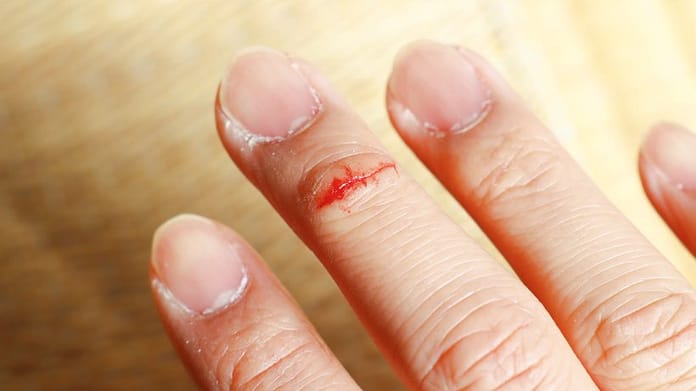Updated: 06/16/2022 – 20:09
Cracks in the feet and hands
RAGADIS: How painful cracks in the skin develop

Photo: Getty Images / Yusuke Ide
Skin tears, fissures, occur mainly on the hands and feet, but also on the elbows or the corners of the mouth.
Ragadis are painful skin lacerations. What is the cause of cracks, what symptoms can occur and how they are treated.
Most people are familiar with dry feet and hands. But if the skin is too dry, it can crack. Painful skin cracks are called rhagades. Here you can find out what causes chapped hands, feet or lips, what symptoms can occur and how to treat them.
RAGADIS: Skin lacerations can be painful
Cracks or cracks appear on extremely dry skin. They are narrow and fissured and can occur in the epidermis. These incisions are not only visually unpleasant, they can be very painful, bleed and become inflamed. Skin cracks appear mainly on the feet, hands, elbows, heels, and corners of the mouth – that is, on areas of skin that can be exposed to extreme weather and friction.
Especially when the skin is very dry and loses its elasticity as a result, the gates are wide open. When skin patches are excessively stretched, the skin ruptures. Skin cracks are a problem because germs can penetrate into them, which in turn can cause inflammation.
Inflammation of the angle of the lips and skin cracks on the lips
Feathers can occur both on the lips themselves and in the corners of the mouth. Dry and chapped lips are exacerbated by cold and humidity. Moisturizing dry lips is also counterproductive. The tearing of previously damaged skin at the corners of the mouth increases when eating, talking and laughing and can cause pain. These angular cheilitis are colloquially referred to as “rotten spots,” and are medically known as angular cheilitis.
What causes rhagades?
Above all, dry skin leads to the appearance of wounds. Other factors are:
- cold and hot air
- Nutrient deficiency
- Signs of skin aging
- Detergents that attack the skin’s natural barrier
- Skin diseases such as neurodermatitis
- genetic predisposition
- Excessive walking barefoot
- Improper foot care (repeated toenail removal)
- UV
How are rhagades treated?
Rhagades can be prevented by regular use of greasy creams. If they do appear, creams and tinctures containing dexpanthenol, myrrh, chamomile or sage extract can relieve symptoms. They reduce inflammation, disinfect and reduce pain. Zinc pastes, which absorb moisture and keep the skin dry, are also suitable.
If there are already deep skin cracks, then it is necessary to use rich crack ointments. Rhagades are often quite stubborn, so it is important to take care of cracked skin areas in a sustainable, long-term manner. In order to improve the effectiveness of creams, you can put a cosmetic glove or a cotton sock on your hand or foot.
Medications are often prescribed for inflammatory infections – corticosteroids for severe infections, or antibiotics or antifungals for a proven bacterial or fungal infection.
________________
Sources: onmeda.de, apotheken-umschau.de
You can find more interesting information about skin health here:
health
health
All about health and nutrition
Show description


